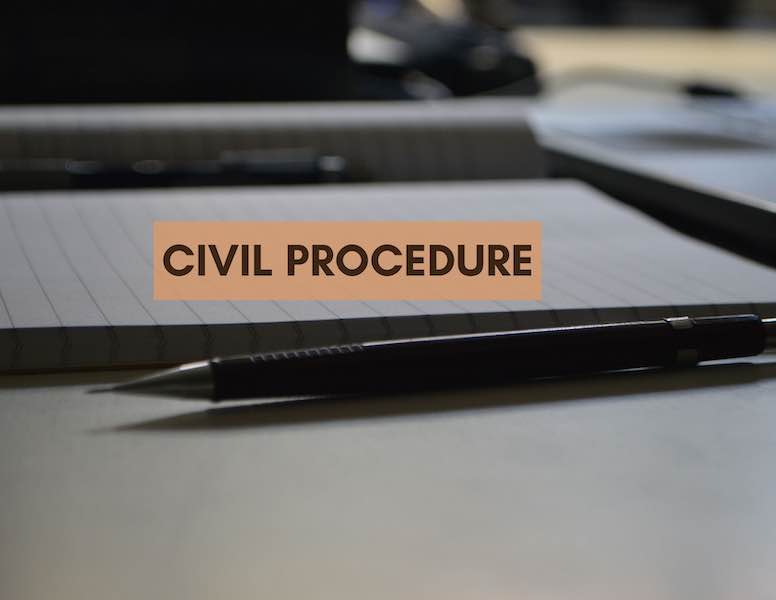Determination of Preliminary Issue under Order 33 of the Rules of Court 2012 – Fact or Fiction?
by Voon Su Huei ~ 26 September 2020
For a Plaintiff commencing a lawsuit against another party, the underlying goal is often to obtain a favourable outcome within the shortest possible timeframe at the lowest cost possible. There are several mechanisms under the Rules of Court 2012 (“ROC 2012”) which allow the Plaintiff to achieve this goal. For example, vide an application for judgment in default under Order 13 of the ROC 2012 or through a summary judgment application under Order 14 of the ROC 2012.
This article discusses the determination of a preliminary issue in a civil action under Order 33 of the ROC 2012 and explores the extent to which this procedure results in the speedy and satisfactory disposal of a matter.
Introduction to Order 33 of the ROC 2012
Order 33 Rule 2 of the ROC 2012 (“Order 33 Rule 2”) is worded widely as:
“The Court may order any question or issue arising in a cause or matter, whether of fact or law or partly of fact and partly of law, and whether raised by the pleadings or otherwise, to be tried before, at or after the trial of the cause or matter, and may give directions as to the manner in which the question or issue shall be stated.”
It allows any question or issue of fact, law, or mixed fact and law to be tried at any stage of proceedings prior to judgment being handed down. In this regard, Order 33 Rule 2 has a far wider scope than the one envisaged by its close counterpart, being Order 14A Rule 1 of the ROC 2012, the latter which envisages the final determination of an action purely on a question of law and without the use of oral testimonies.
Order 33 Rule 5 of the ROC 2012 (“Order 33 Rule 5”) then goes on to state that the court may then dismiss or give judgment in the matter if it appears to the court that a determination of the issue substantially disposes of the matter or renders trial of the matter unnecessary.
Unsurprisingly, the court will allow an application under Order 33 Rule 2 if and only if the trial of the question will result in a substantial saving of time and expenditure which otherwise would have to be expended should the action go on trial as a whole. It follows that a preliminary question should be carefully and precisely framed in order to avoid difficulties of interpretation as to what is the real question which is being ordered to be tried as a preliminary issue. See the decision of SI Rajah & Anor v Dato’ Mak Hon Kam & Ors (No. 1) [1994] 1 CLJ 207.
In Krishnan Rajan A/L N Krishnan v Bank Negara Malaysia & Ors [2003] 1 MLJ 149, the court held that premised on established principles, an Order 33 Rule 2 application is not a suitable recourse when facts are in dispute or when extrinsic evidence needs to be adduced. The courts are wary of an Order 33 Rule 2 application being used as a “treacherous short cut” to mask the real issues in dispute between parties. Hence, the justifications for allowing the trial of a preliminary issue of fact as opposed to law often needs to be far more cogent.
The Utility of Order 33 Rules 2
In practice, does Order 33 Rule 2 facilitate a quick and effective resolution of a case?
An Order 33 Rule 2 application is arguably most useful in civil matters where several disputes on facts and law are raised, but which upon closer inspection, it becomes clear that the full disposal of the case rests only on one or two issues. The trial of a trimmed down scope of issues brings with it the saving of time and costs, especially if less witnesses would need to be called as a result.
However, given that courts do not easily allow a preliminary determination of an issue of fact, cases which benefit most from an Order 33 Rule 2 application are those that hinge on the disposal of a question of law, such as whether the court has jurisdiction to try a matter or whether certain exemption clauses protected the servants of a contractor. By way of comparison, the court is unlikely to allow an Order 33 Rule 2 application where issues of breach of trust and fraud are involved given the inherent complexity of these subject matters. This makes sense, given that a trust per se can be express, implied or constructive, etc. Ultimately, the relief will relate to specific performance or damages etc. In these circumstances, it would be prudent for all relevant issues to be canvassed before the court at trial in the usual course.
Indeed, a long line of authorities have cautioned against unwittingly condoning an abuse of the Order 33 Rule 2 process. This means that where there is an obscurity of facts or law or both where further light can only be thrown at the trial, an Order 33 Rule 2 application should not be used to truncate the trial of issues prematurely. For instance, in the case of Heah Theare Haw v Chin Kim Gan & Anor [2016] 1 LNS 442, the following question was formulated by the Defendant for a preliminary determination under Order 14A or Order 33 Rule 2 of the ROC 2012:
“Whether the Plaintiff, being a shareholder in Saluran Projek Development Sdn Bhd, the Company that has been wound up, has locus standi to bring this action against the Defendants by representative action on behalf of himself and other shareholders in the Company for the reliefs claimed in the Statement of Claim?”
While the formulation of the above question appears to be straightforward enough at first blush, the court found that the question in fact entails serious disputes among parties that can properly be adjudicated only at a full trial. These include a) the rights of the Respondents that would be infringed; b) the wrong acts by the Applicants and c) foreseeability of damage to the Respondents shareholding by the Applicants’ action.
One can envisage that the natural pitfall of an Order 33 Rule 2 application is that it may be improperly used by parties to present a set of skewed facts which unduly simplify the case, but which in fact warrants further investigation at trial of all underlying facts. Bear in mind that under Order 33 Rule 5, the court has the power to dismiss the cause or matter if the decision of an issue tried separately substantially disposes of the case or renders trial unnecessary. If the court disposes of a whole suit premised on facts canvassed before the court in an unfair manner, the injustice caused to parties affected would be plain.
It is also not impossible to imagine a scenario where a court allows an Order 33 Rule 2 application for the trial of certain issues only to find that it is unable to make a conclusive finding on the matter at the end without hearing further evidence. This might be the case where during the initial application stage of Order 33 Rule 2, the significance and weight to be accorded to each individual fact of the matter had not yet become apparent. Or perhaps, parties were not being forthcoming with all the material facts at play during the application stage. In any event, trial would still need to be continued in the ordinary manner with the usual time and expenses being incurred.
Perhaps the full benefits of an Order 33 Rule 2 application can only be reaped in clear-cut instances where having considered the entire factual matrix, the conclusion that a matter can be disposed of on a specific set of issues is inescapable.

